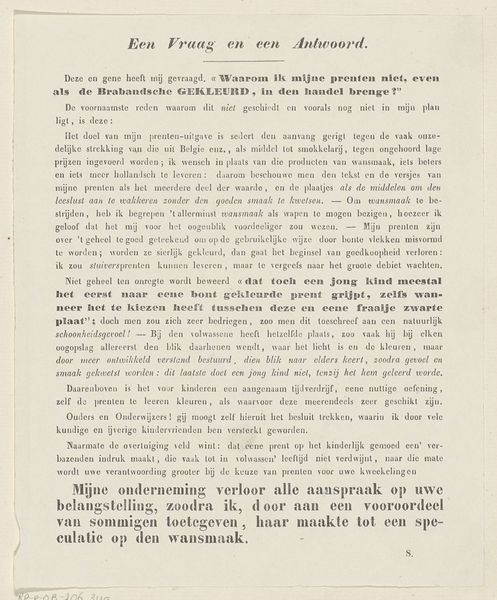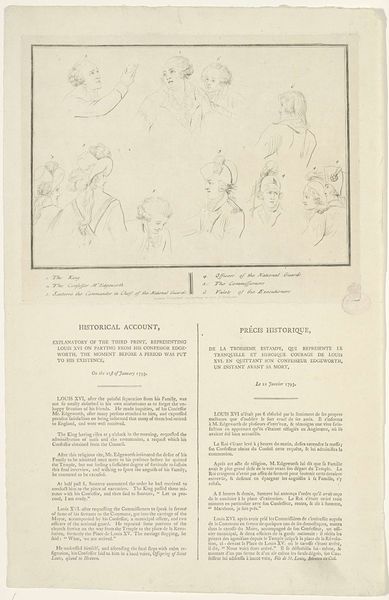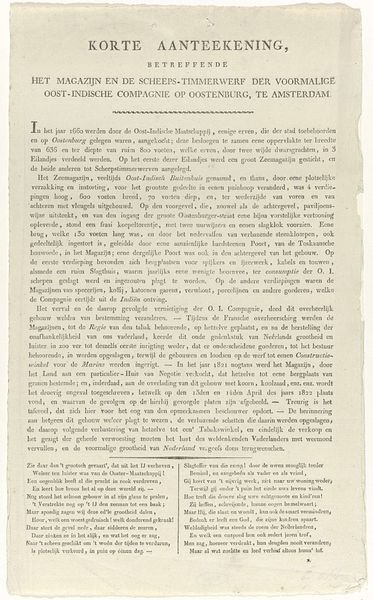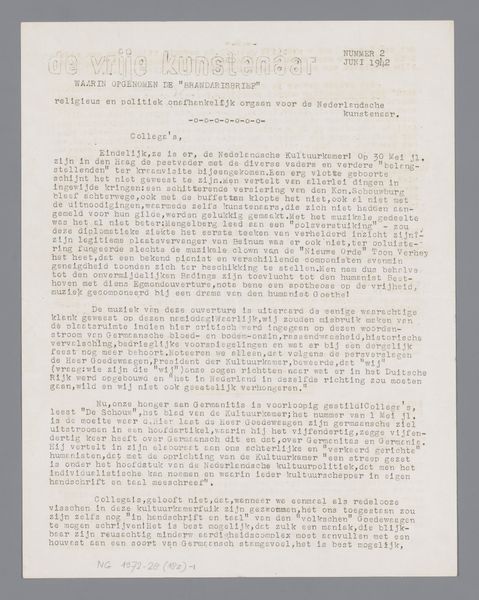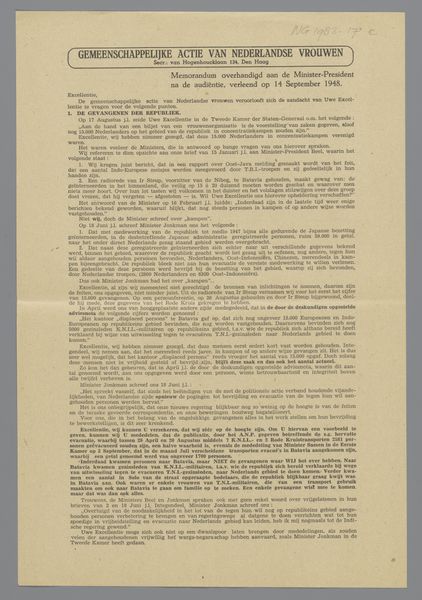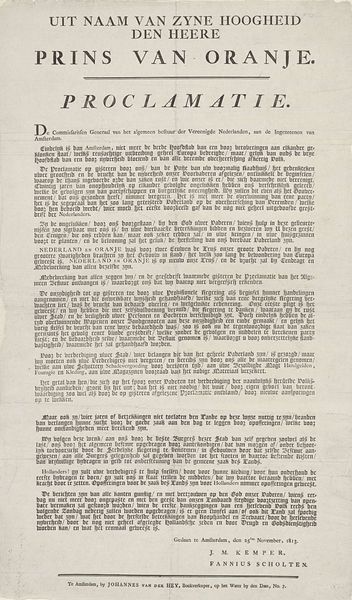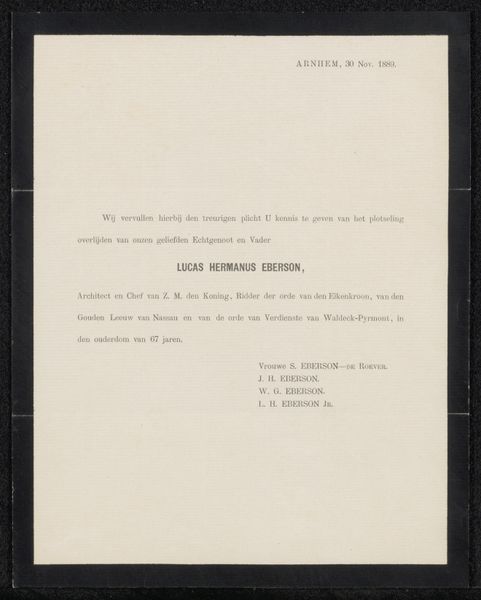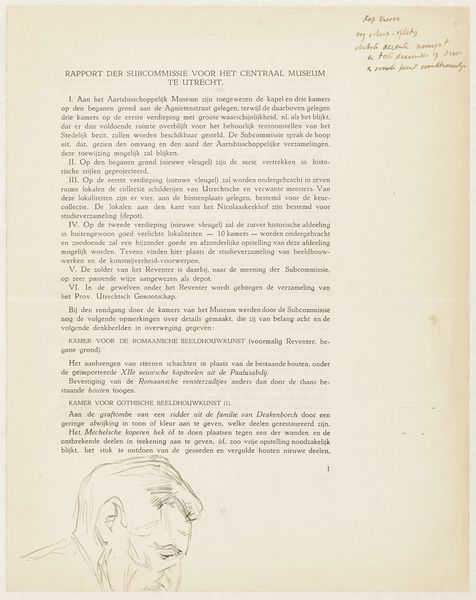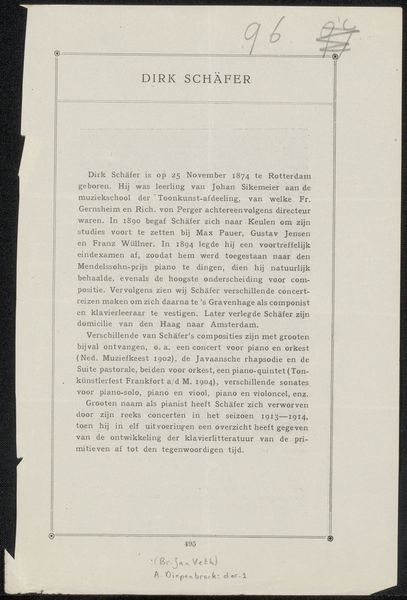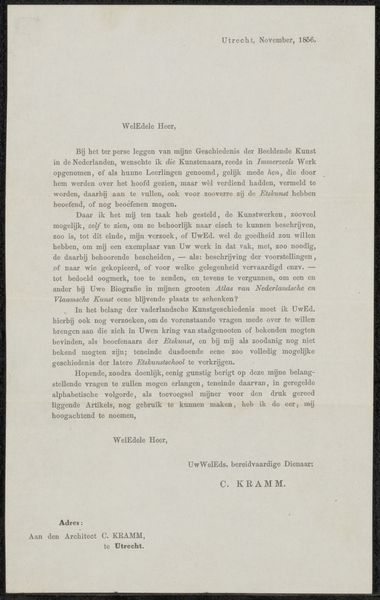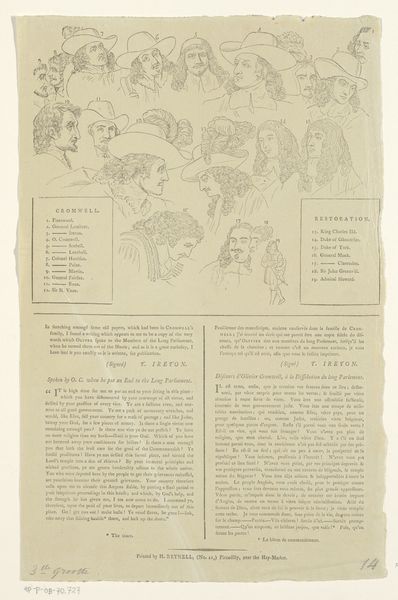
Dimensions: height 230 mm, width 170 mm
Copyright: Rijks Museum: Open Domain
Editor: Here we have "Inteekening op de gravure: De 21e November 1813" from 1863, by Frans Buffa en Zonen. It seems to be a preliminary sketch for a print, combining image and text. I find it intriguing, almost like a historical comic strip. What do you see in this piece? Curator: I see a layering of historical representation and the construction of national identity. The sketch depicts a pivotal moment in Dutch history, November 21st, 1813, referencing the end of French occupation. But I’m also struck by how it speaks to later, nineteenth-century nation-building projects. The inclusion of text transforms it from a simple depiction of an event into a broader narrative, right? Editor: Right, it's trying to shape a specific understanding of that event. Curator: Exactly! The artist is not just recording history but interpreting it. The image shows a gathering of important figures, and below we see text describing the significance of that November day for Dutch liberation. What interests me is how this piece participated in constructing a collective memory – reinforcing the idea of Dutch resilience against foreign powers. Consider the romantic undertones typical of the era; a desire to solidify national identity in the wake of political upheaval. Editor: So, you're saying it's more than just a historical record; it's a piece of nation-building propaganda, in a way? Curator: It reflects how historical events are molded and presented to create a shared sense of identity and patriotism. Do you think that impacts how we should understand its value? Editor: Definitely, seeing it that way makes me question whose version of history it presents and whose voices might be missing. Curator: Precisely. Understanding art within its socio-political context opens up critical conversations. This work becomes more than just an aesthetic object, but an active agent in shaping historical narratives. Editor: This really encourages me to see how art reflects the power dynamics of its time. Curator: And hopefully prompts a deeper investigation into who gets to write history and whose stories get told.
Comments
No comments
Be the first to comment and join the conversation on the ultimate creative platform.
